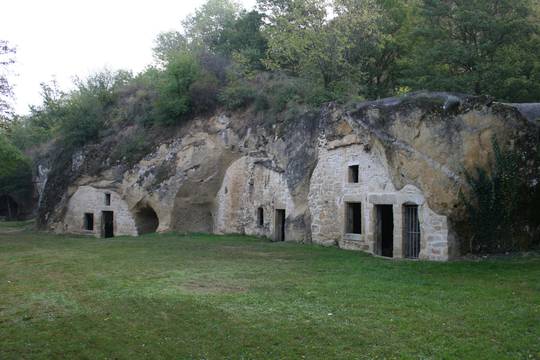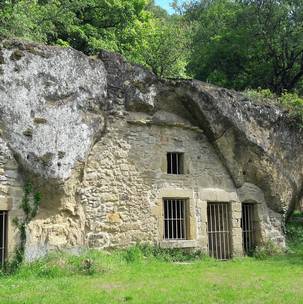Exploring the troglodyte houses
Come and explore the troglodyte houses in Châteauneuf-sur-Isère. Take a stroll around this charming place surrounded by nature. It is a favourite for those interested in heritage sites.
Châteauneuf-sur-Isère is halfway between Valence and Romans. You can get there by car and the car park is just 5 minutes walk away. You can also get there by bicycle, after leaving the green cycle path through Isère Valley. It is free-of-charge to access.
I went to explore these surprising ruins with my partner, for the "Heritage Day". We chose to take part in a tour with a commentary from a member of the village council, who told us all about the history of these troglodyte houses, built into the rock.

A historical place
We learn that these houses were built into the soft rock, in a molasse hilltop. This dwelling therefore played a part in the stone extraction trade, providing materials for various constructions in Valence (Saint-Apollinaire cathedral, Maison des Têtes, etc..), in Romans sur Isère (St Barnard collegiate church...) and in the surrounding area.
The extraction of molasse began in the Roman era and ended at the beginning of the 20th century. This place was chosen as the location for these dwellings because here it was easy to dig into the molasse cliffs to extract the stone, and water was in abundance. The hill was therefore transformed into a veritable troglodyte district. Dozens of cavities have been recorded in this town, now known as "the village with a hundred troglodyte houses".
The legend of Saint-Hugues left its mark on the history of this place. As a native of the village, bishop of Grenoble and creator of the Chartreux order, he inspired numerous religious beliefs, including the legend of the miraculous source.
Between 1895 and 1939, this was the location for a vast pilgrimage, gathering catholics who came to enjoy the benefits of the source. According to legend, this water was able to restore sight and bring down a fever.
A place to protect
Today, there are a dozen troglodyte houses that are still in good condition, some caves, the miraculous source and the ruins of a 15th-century dwelling.
This place of historical and geological interest requires frequent restoration work. The town has in fact recently received a cheque for 50,000 euros to help preserve this historical and geological place (thanks to the Heritage mission led by French TV presenter Stéphane Bern).
After exploring these unique troglodyte dwellings, I recommend going for a walk along the Chemin des Carriers. This footpath takes you on a discovery of the heritage of Châteauneuf-sur-Isère with informative panels along the way about the heritage sites, local history and gourmet specialities.

This pleasant walk takes you through a wooded area and preserved natural environment. There are some great views of the Vercors mountains, the Ardèche and Drôme des Collines. Children will also enjoy the games provided especially for them.




